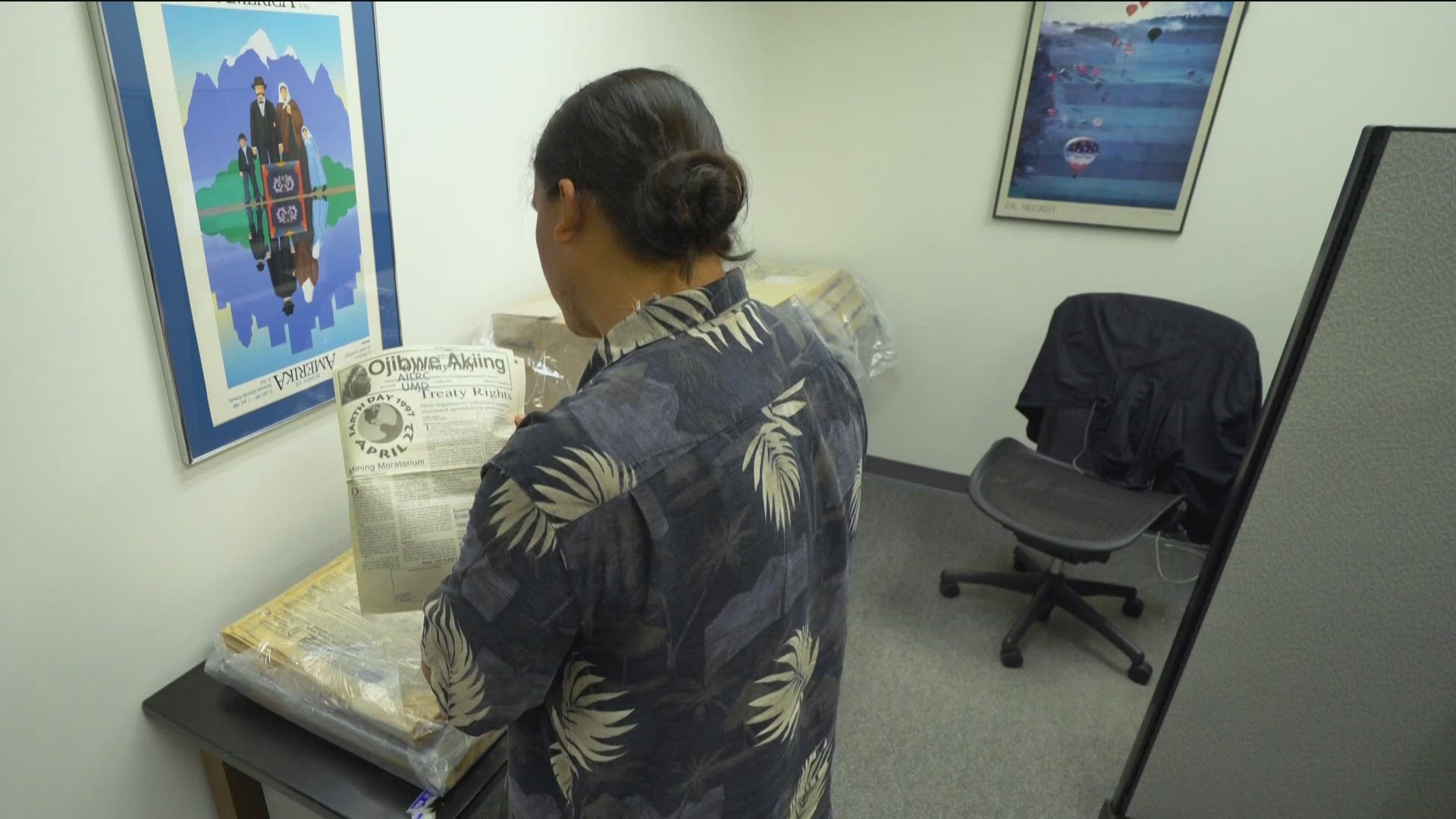SAINT PAUL, Minn — From the corner cubicle, Isaac Trimble admits to getting distracted by a good story.
"I guess what, to the average Minnesota citizen, may seem like just gossip or small time news, to this community, it is everything," he said.
Trimble, a summer intern, works with old newspapers in the Minnesota Historical Society's (MNHS) collection. He reads up on a variety of topics from treaty rights to the 1989 Super Bowl while on a project to digitally archive papers for the MNHS website.
"Any place that has some kind of published periodical, I believe we get it," Rita Walaszek Arndt said.
She is the program and outreach manager for the Native American Initiatives department at MNHS. "The majority of our items are here in Saint Paul, and not everybody can get to Saint Paul, so we're trying to make things accessible online."
The department hired Trimble for the summer to increase access, specifically, to historic Native newspapers. The digitizing initiative overall started much earlier in 2010 with papers like the Progress, Tomahawk and Red Lake News, according to MNHS.
"Those newspapers are still really, really valued," Walaszek Arndt said. "That is where our tribal council shares messages. They continue to write articles to share information."
The papers are generally written by tribal communities for tribal communities. Walaszek Arndt said there's value in giving readers direct access to those sources.
"There has been a lot written about tribal communities over the years from the outside and a lot of that has been really harmful, so to be able to have that first person, very from-the-source kind of material out there is so key," she said. "Counteracting some of the stereotypes and misconceptions that people have on Indigenous people, it's huge."
In the 1870s, while mainstream news outlets were writing about events like the Franco-Prussian War or the state of Georgia being readmitted to the Union, the Dakota-language paper Iapi Oaye often depicted how Native Americans were assimilating in the white settler's way of life.
The Iape Oaye told of "Wanikiya Wan," meaning "a savior," referring to Jesus, according to Dakota-to-English translations by Deacon DeBoer, who works at MNHS. DeBoer explained that Christian publishers with the Dakota mission had a say in what the people wrote.
There is a lot to learn and a lot of papers to go through. Scott Rosales, a newspaper digitization assistant, said the historical society each year sifts through hundreds of reels containing the papers. Last year, he helped scan 220,000 pages of microfilm.
Microfilm is still the best option for archiving documents long term, Rosales said. After scanning the film, staff convert the images on a computer then further process them for a web format.
"It's very cool. I really appreciate it," Trimble said. "It makes me feel like I'm helping to take agency in the collection and preservation of our histories as an Indigenous person."
Browse through the historical collection on the Minnesota Digital Newspaper Hub.

